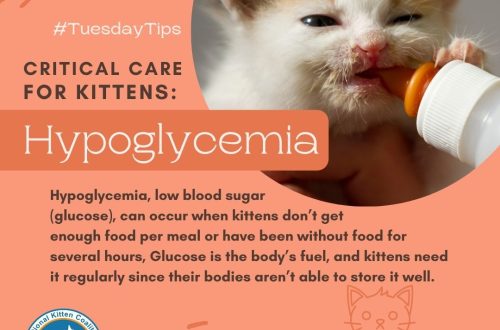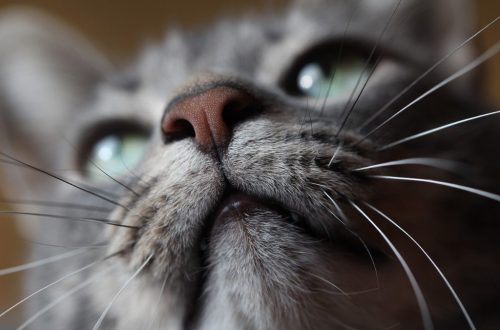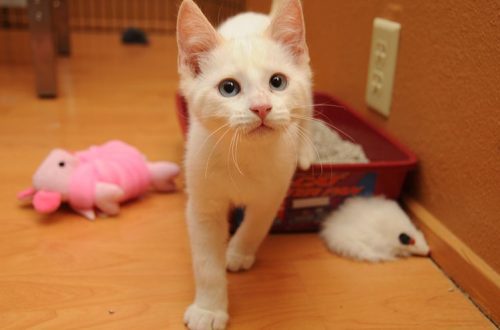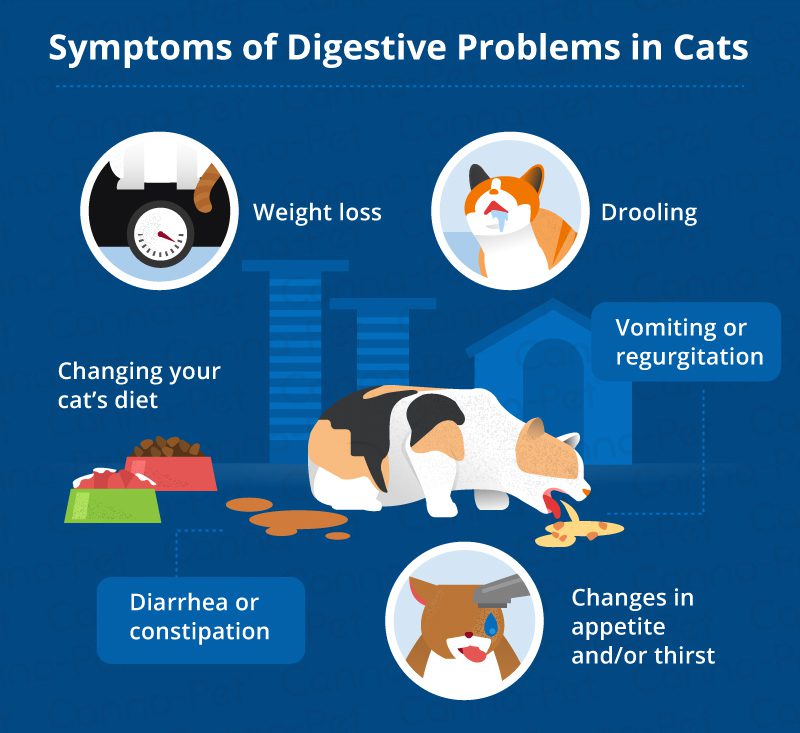
A cat has digestive problems: why it happens and what to do
Digestive problems in cats happen so often that many owners consider this the norm. But if your pet regularly – once a week or more often – has loose stools, internal disturbances may be the cause. Perhaps you need to change your cat’s food or make changes to its environment. But before that, you will have to consult a veterinarian.
What are the most common problems and how to avoid them?
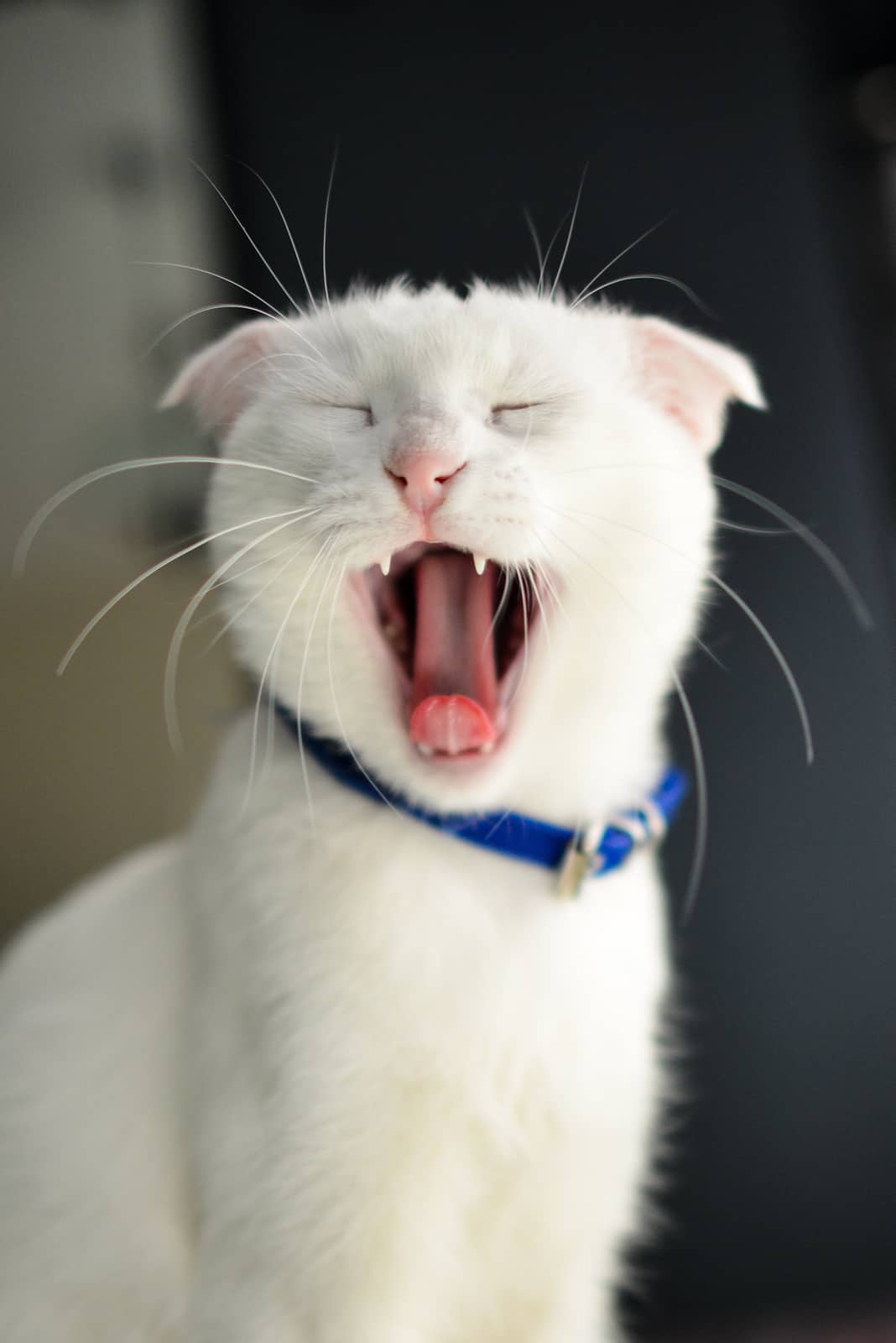
Contents
1. Intestinal worms
Internal parasites are very common in cats, even in domestic cats. Pets at the same time may not show any signs of infection, which prevents diagnosis and treatment. The most common intestinal parasites in cats are flukes, roundworms, and tapeworms.
Signs of intestinal parasites in a cat’s digestive system include:
- vomiting;
- diarrhea;
- presence of worms in feces or vomit;
- weight loss;
- bloating.
Intestinal worms in cats are not only dangerous, but also contagious to humans. Therefore, it is important to have your cat have a stool test at a veterinary clinic once or twice a year. If the test result is positive, follow all instructions from your veterinarian for deworming.
2. Constipation
Another common digestive problem in cats is constipation. They can be caused by dehydration, pain, problems with motility in the colon. It can also be caused by a rare disease called megacolon. It occurs in cats that “tolerate too long”, or as a result of chronic constipation or obstruction.
Among the measures suggested by the veterinarian may be to increase the pet’s fluid intake. To do this, you can add canned food to dry food, increase your level of physical activity, or start working on weight loss.
Your veterinarian may recommend a food for cats with digestive problems, such as Hill’s® Prescription Diet®. If the efforts of the cat in the tray do not lead to the desired results, it is best to take her to the veterinarian as soon as possible.
3. Hairballs in the stomach
The accumulation of hairballs in the stomach of an animal is very common, but this does not mean that the pet has to live with it. Hairballs form when a cat is shedding a lot of hair or when it has primary disorders of the digestive system. But if this happens to a cat no more than once a month, which is considered the norm, then it is not necessary to contact a veterinarian.
If a cat has digestive problems against the background of the formation of hairballs, then what to feed it, the veterinarian will tell you. He will most likely recommend a special food, such as Hill’s® Science Plan® Adult Hairball Indoor. It contains fiber in amounts that help reduce the formation of hairballs.
If the hairball problem persists, you can book your cat in for professional grooming and ask for a lion haircut. But it is best to consult with your veterinarian.
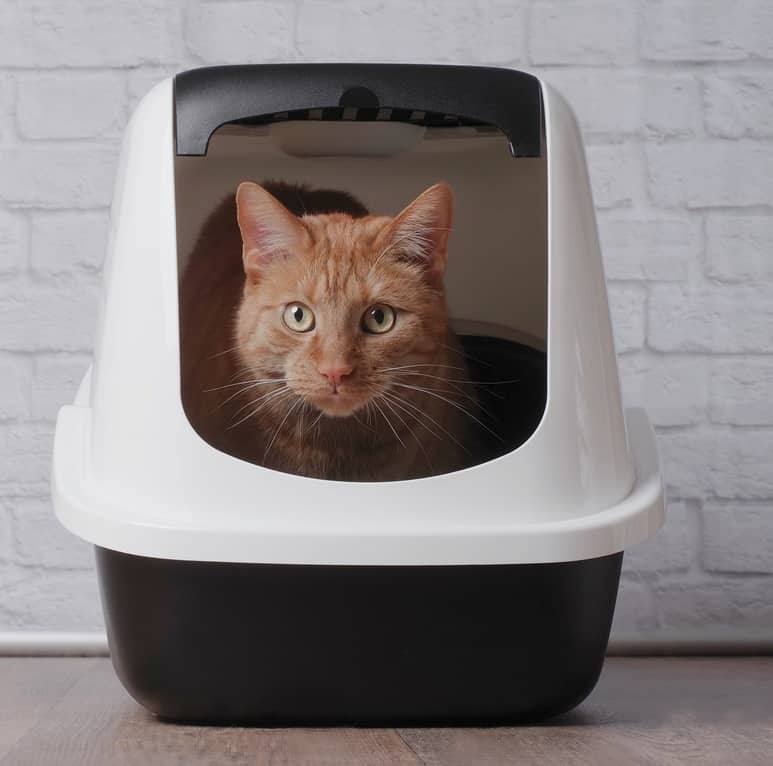
4. Inflammatory bowel disease and gastrointestinal lymphoma
One of the most frustrating conditions of the feline digestive system is inflammatory bowel disease, or IBD. Digestive problems in cats associated with IBD include vomiting, diarrhea, loose stools, loss of appetite, and weight loss. The exact cause of IBD is unknown, but it is believed to be a genetic disorder of the immune system. It causes an enhanced immune response to food, parasites, or bacteria.
The symptoms of IBD mimic a host of other gastrointestinal disorders, so that the disease can only be definitively diagnosed after an intestinal biopsy. Many owners don’t like the idea of having their cat go through surgery, so the veterinary clinic may offer a non-invasive abdominal ultrasound.
Although IBD cannot be definitively diagnosed by ultrasound, there are several signs that may indicate that a cat has the disease. Among them is thickening of the intestinal wall. Treatment for IBD usually includes deworming and, if necessary, antibiotics. The cat may also need oral or injectable steroids and a milder, hypoallergenic food.
In IBD, it is important to reduce inflammation. Chronic inflammation over time can predispose to the development of gastrointestinal lymphoma, which is considered a malignant development of IBD in cats. The instructions of the veterinarian should be strictly followed if the cat is diagnosed with inflammatory bowel disease.
5. Food allergies
True food allergies are relatively rare in cats. It usually manifests itself with a combination of symptoms:
• from the gastrointestinal tract – vomiting, diarrhea or gases;
• on the part of the skin – itching, red spots and hair loss.
Among its most common sources are beef, dairy and fish, explains the Cummings Center for Veterinary Medicine at Tufts University.
Food allergies affect the immune system of the gut and skin.
If a veterinarian suspects a cat has a food allergy, they will order a 10 to 12 week trial of a hypoallergenic food. During this period, only the prescribed hypoallergenic food should be given to the cat in order to exclude ingredients to which she may be allergic.
If at this time the cat eats something else, the test will have to be repeated. In an animal with a true allergy, gastrointestinal symptoms should disappear in two weeks, and skin symptoms in eight to ten weeks. Your veterinarian may also prescribe steroid medications, which will quickly improve your furry pet’s well-being.
Do not panic if your cat suddenly starts having problems with the gastrointestinal tract. Knowing what situations with digestion she should beware of and what events signal the need to visit a veterinarian, you can properly take care of your graceful beauty and her gastrointestinal tract.
See also:
Tips for helping your cat with an upset stomach
Some reasons why a cat may feel sick after eating
How do you know if a cat is in pain? Signs and symptoms of diseases



